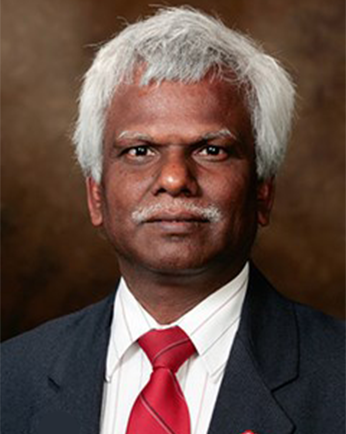Session Abstracts:
Session 7A

Associate Professor
Stanford University
Presentation Title: Towards high-fidelity large-eddy simulation of extreme wind/wave events in coastal regions
Co-Author: H. Hwang
Abstract: The impacts of climate-driven hazards in coastal regions are escalating due to sea level rise and anthropogenic warming, causing severe direct losses and fatalities. The NICHE project aims to design a full-scale testing infrastructure to mitigate the impacts of wind and coastal hazards. This presentation will provide an overview of progress towards establishing validated high-fidelity large-eddy simulations (LES) of coupled wind/wave problems to inform the design of NICHE. First, the performance of the opensource code OpenFOAM for wind/wave simulations at moderate wind- speeds will be evaluated. Next, additional interface-capturing schemes for Voronoi-type unstructured grids will be introduced in an effort to obtain a more accurate, robust, and efficient numerical framework for larger scale simulations of extreme wind/wave scenarios. The capabilities of the framework will be evaluated for validation cases and the results of an initial parametric analysis to investigate the effect of NICHE design parameters such as the channel height will be presented.

Postdoctoral Scholar
University of California, Berkeley
Presentation Title: A CFD-based workflow for high-fidelity simulation of wind effects on buildings with uncertainty quantification
Co-Author: Catherine Gorle; Ahsan Kareem; Frank McKenna
Abstract: Wind-induced damage to buildings is one of the primary sources of property loss every year. Experimental testing in boundary layer wind tunnels has traditionally been used to evaluate wind loads on buildings. Alternatively, computational fluid dynamics (CFD) holds significant promise for modeling wind effects on structures, surpassing many of the limitations of wind tunnel testing. Some of the main challenges in employing CFD tools for wind load evaluation stem from the lack of streamlined workflows, guidelines, and validation benchmarks. The availability of open-source software tools tailored to wind engineering applications alleviates some of these challenges and facilitates broader adoption in research and practice. This presentation highlights the CFD capabilities of the NHERI-SimCenter/WE-UQ tools for wind-induced loads/response evaluation of structures while propagating uncertainties in selected wind and structural parameters. First, the overall workflow of WE-UQ is overviewed, emphasizing wind load generation modules, such as stochastic, database-enabled, and CFD-based approaches. Then, the implemented CFD-based workflow to create digital twins is demonstrated in light of the recent advances in computational wind engineering. This workflow incorporates new capabilities to create/import building geometry, generate automated unstructured mesh, define boundary conditions, run simulations, and post-process results. Finally, the developed workflow is demonstrated for evaluating the overall wind-induced responses of a high-rise building, propagating uncertainties in the numerical modeling of the structure.

Professor
University of Arkansas
Presentation Title: NHERI Facility: National Testing Facility for Enhancing Wind Resiliency of Infrastructure in Tornado-Downburst-Gust Front Events (NEWRITE)
Co-Author: Pending
Abstract: This Mid-scale Research Infrastructure-1 award (Phase-I) will support the design phase for a university-based National Testing Facility for Enhancing Wind Resiliency of Infrastructure in Tornado-Downburst-Gust Front Events (NEWRITE). The design of NEWRITE will consider realistic wind fields (speeds up to 225 miles per hour (mph)) in non-synoptic windstorm (NSW) events (tornado/downburst/gust-front) to enable physical testing of their loading and damaging effects on civil infrastructure at mid-to-full model scales (1:10 to 1:1). Iowa State University will lead this design project with participation from Clemson University, Missouri University of Science and Technology, Northeastern University, Texas Tech University, University of Arkansas at Fayetteville, University of Florida, University of Washington, and University of Wisconsin at Madison. This design project will be a component of the National Science Foundation (NSF)-supported Natural Hazards Engineering Research Infrastructure (NHERI) and will contribute to the NSF role in the National Windstorm Impact Reduction Program (NWIRP). If Phase-I is successful, then in Phase-II ($75M) the testing facility will be constructed in Iowa state University for everyone to use.

Associate Professor
University of Houston
Presentation Title: Turbulence and wave resolved simulations of marine atmospheric boundary layer flows for applications in offshore wind energy and marine aerosol transport
Co-Author: Masoumeh Gharaati
Abstract: Flow characteristics in the marine atmospheric boundary layer (MABL) are highly influenced by the complex interactions between wind turbulence and sea-surface waves over a wide range of length scales. Sea-surface waves are usually generated by wind forcing and have broadband spectra. Short waves propagate slower than the local wind and act as moving surface roughness elements to induce form drag to the wind field. Long waves such as the ocean swells can propagate faster than the local wind, which can transfer momentum to the near-surface wind and generate significant wave-correlated distortion to the wind field by the strong surface orbital motions. Modeling the wind-wave interactions is challenging due to the multiscale natures of the wind and wave flows as well as their interactions. To tackle this problem, a hybrid turbulence/wave-resolved numerical model has been developed. In particular, the potential-flow based high-order spectral (HOS) method is used to simulate the sea-surface waves and the large-eddy simulation (LES) method is used to simulate the wind turbulence. LES resolves the essential large- and intermediate-scale fluid motions in high Reynolds number turbulence directly, with the effects of small-scale turbulence parameterized by subgrid-scale models. This hybrid LES-HOS model has been applied successfully to model the offshore floating wind farms and oil droplet aerosol transport in MABL. Some representative results from these two applications are presented in this talk.